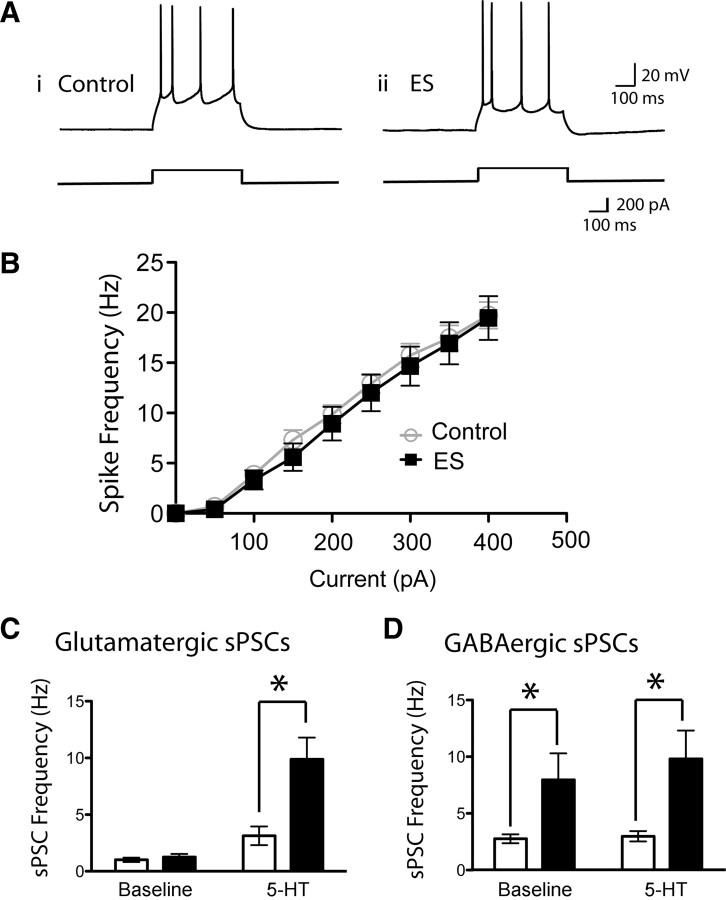Figure 5.
Early stress does not appear to enhance the intrinsic excitability of the prefrontal cortical slice as measured by input–output experiments and baseline levels of glutamatergic and GABAergic synaptic activity. A, The intrinsic excitability of layer V pyramidal neurons was assessed by examining the frequency of action potentials elicited by injections of depolarizing current. Representative examples are shown from control (Ai) and ES (Aii) animals. B, A graph of the input–output relationships shows that layer V pyramidal cells from both groups have similar excitability when assessed from their resting potentials. C, The frequency of glutamatergic sPSCs measured in layer V pyramidal neurons at baseline and in response to 5-HT (10 μm, 30 s) in controls and ES. Both groups have a similar frequency of glutamatergic sPSCs at baseline. In the presence of 5-HT, the frequency of glutamatergic sPSCs is significantly enhanced in both controls and ES animals, and two-way ANOVA revealed an interaction whereby the 5-HT-elicited increase in glutamatergic sPSCs is significantly enhanced in ES neurons (*p = 0.0006). D, The frequency of GABAergic sPSCs measured (with high Cl− patch solution in the presence of CNQX, 20 μm) in layer V pyramidal neurons at baseline and in response to 5-HT (10 μm, 30 s) in controls and ES. Interestingly, ES layer V neurons display a significantly higher frequency of GABAergic sPSCs at baseline (two-way ANOVA reveals a significant main effect of postnatal group, *p = 0.001). Bath application of 5-HT (10 μm, 30 s) did not significantly alter the frequency of GABAergic sPSCs in either the control or ES animals. A higher concentration of 5-HT may be required to increase the frequency of GABAergic sPSCs overall (Zhou and Hablitz, 1999).

